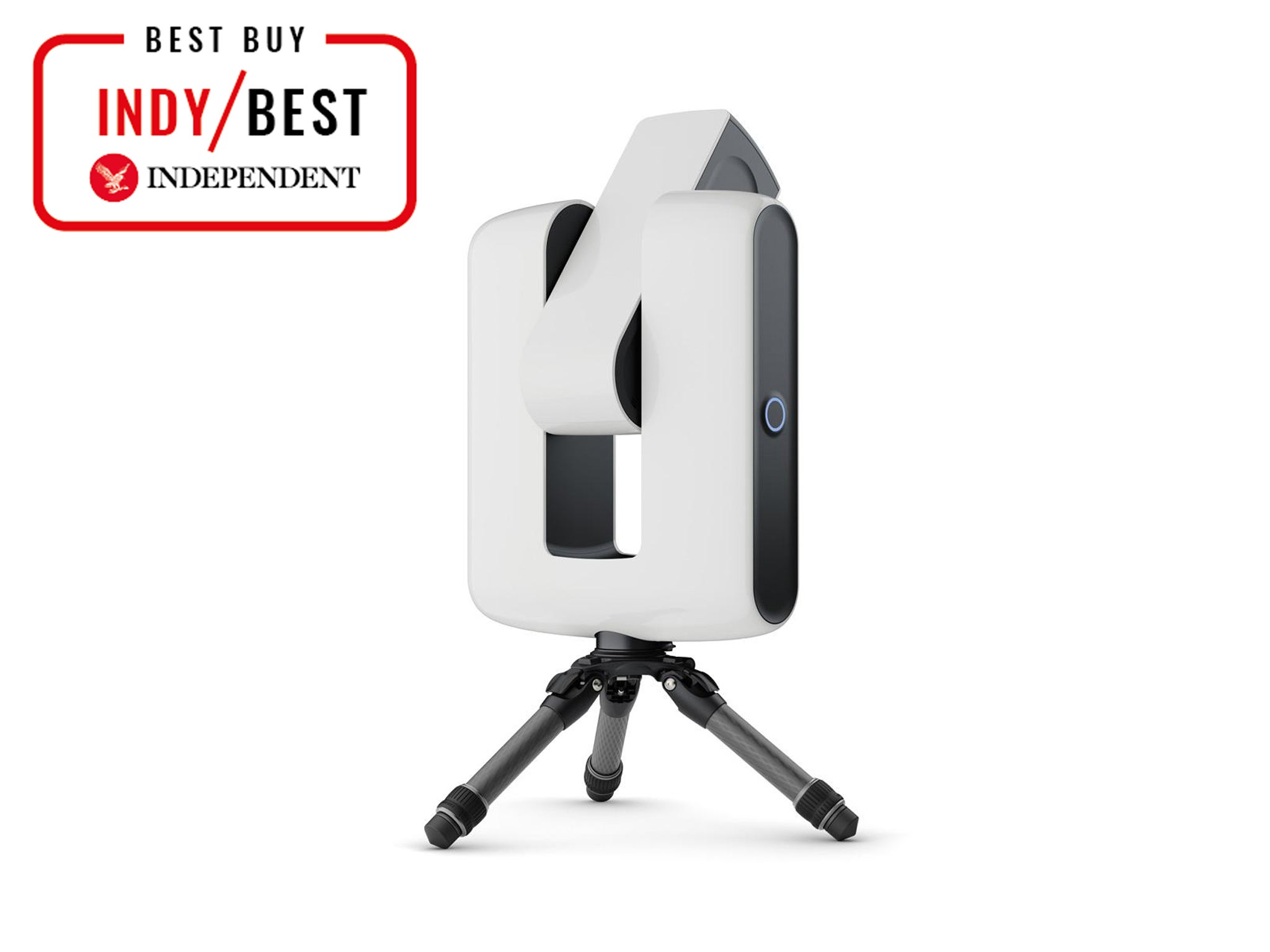
The Independent's journalism is supported by our readers. When you purchase through links on our site, we may earn commission. Why trust us?
7 best telescopes for exploring the night sky
Get a guided tour of up above with the latest stargazing tech
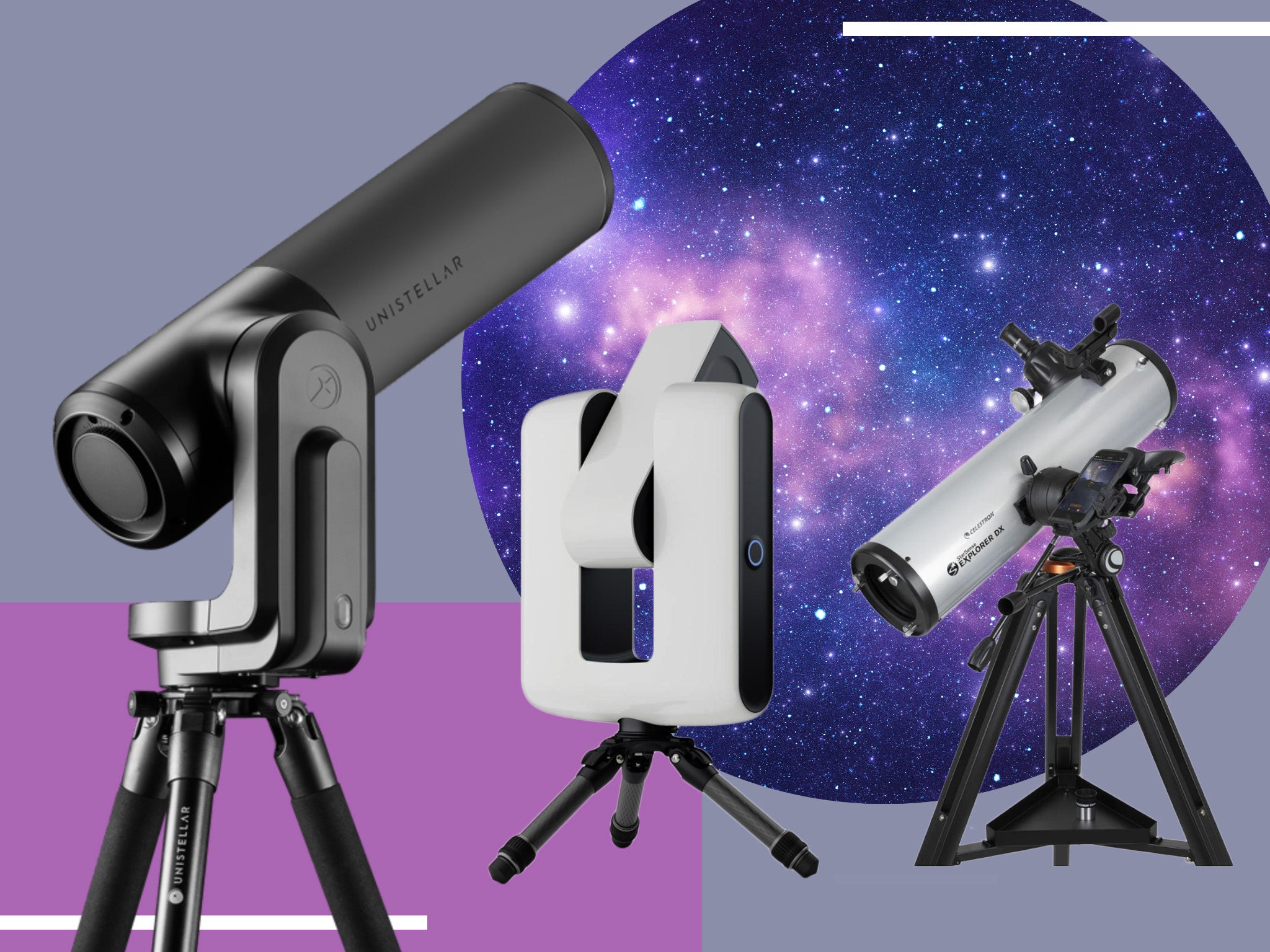
Doublet refractors. Focal lengths. Altazimuth systems. The world of telescopes and astronomy can be a very confusing one, but the key to finding the right scope is actually quite straightforward.
A good telescope is one that will keep you coming back to it because it’s simple, provides a thrilling view of the night sky and is able to teach you something when you use it.
So, to avoid a telescope becoming a very expensive dust collector in the living room, we tested a range of products that fall into the main categories of refractors and reflectors, as well as some connected, computerised models.
Refractors use glass lenses at the end of the telescope tube to bring a magnified view of the sky; while reflectors, invented by Isaac Newton, use mirrors to zero in on celestial objects.
Luckily, we had some big astronomical events that coincided with our testing window, from an April Super Moon to an appearance from the solar system’s smallest planet, Mercury.
Read more:
Each scope’s mount was also considered, as this is crucial for frustration-free astronomy, to see how solid and immovable it was and also how easily it allowed the scope to move along the two axes that you’ll use to find your targets.
Ultimately, our round-up is populated by the telescopes which excelled at getting us up close to solar system targets and the lunar surface, and some which could take us beyond to deep sky objects.
The best telescopes for 2022 are:
- Best for effortles astromomy – Vaonis Stellina: £3,400, Vaonis.com
- Best for guided tours of the stars – Celestron starsense explorer DX 130: £379, Wexphotovideo.com
- Best for budding atronomers – Celestron inspire 100AZ: £249, Wexphotovideo.com
- Best for deep sky gazing – Sky-Watcher starquest 130P reflector: £239, Wexphotovideo.com
- Best for moon watching – Sky-Watcher heritage 100P: £114, Widescreen-centre.co.uk
- Best all rounder – Celestron advanced VX 9.25: £2,697, Widescreen-centre.co.uk
- Best for urban astromnomers – Unistellar eVscope eQuinox: £2,599, Unistellaroptics.com
Vaonis Stellina

Best: For effortless astronomy
With this scope, all you have to do is choose what you want to look at via the app and watch the image build on your phone’s screen, which is both exciting and rewarding.
Obviously, the first thing that you’ll notice about the Stellina is that it’s no ordinary telescope and actually looks like it wouldn’t be out of place on the set of a sci-fi movie. At the touch of a button, the modernist black and white housing beautifully reveals the refractor telescope.
It also allows you to share the discoveries and experience with a multi-user mode that allows up to 10 mobile devices to connect to the scope. Through the app, you’ll be able to zero in on over 100 deep-sky targets, as well as get a good look at the lunar surface.
The Stellina is fully computerised to take the headache and guesswork out of astronomy and with a quick pairing to your smartphone, you’ll be up and running in minutes. Using the phone’s GPS signal to geolocate, all the pointing and tracking is completely automated, as is the focus, giving the most user-friendly experience of all the scopes on test.
Celestron starsense explorer DX 130
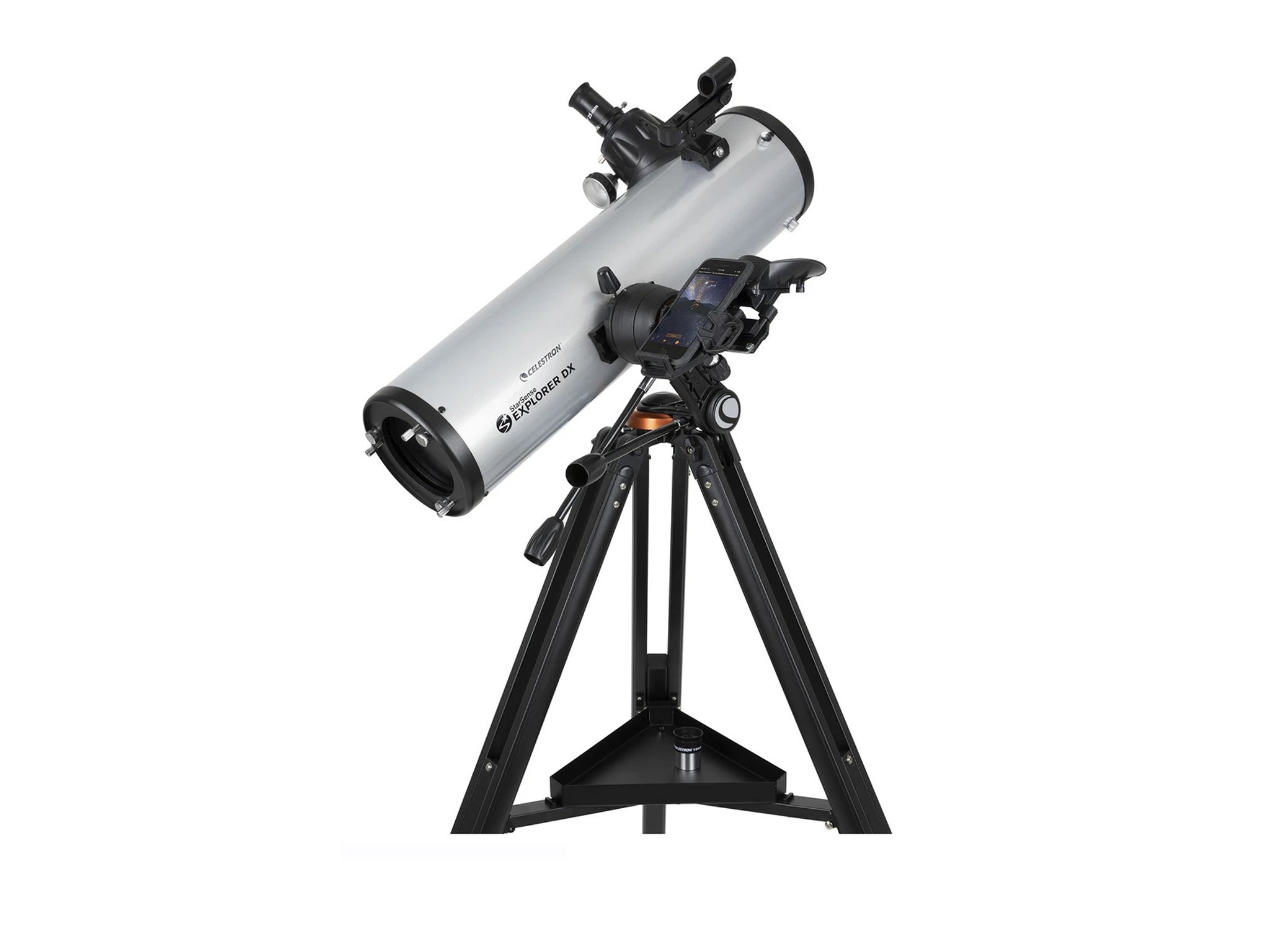
Best: For guided tours of the stars
This excellent refractor model makes great use of a phone dock on top of the scope, transforming it into one that can pinpoint all kinds of targets, using any phone installed with the StarSense app.
Aligning the phone with the telescope is a simple affair. Once your phone is locked on, the app will guide you to different targets via on-screen arrows. It really is a very intuitive system and takes no time at all to master.
The app circles interesting targets and even gives you a “Tonight’s Best” option too, to pique your interest and keep you coming back to the scope night after night. The fact that it’s a refractor also means that it’s lightweight and easy to take and set up at dark sky sites, especially if you struggle with light pollution. The scope has good quality optics made for sharp views of the lunar surface, as well as wider views of star clusters.
Celestron inspire 100AZ
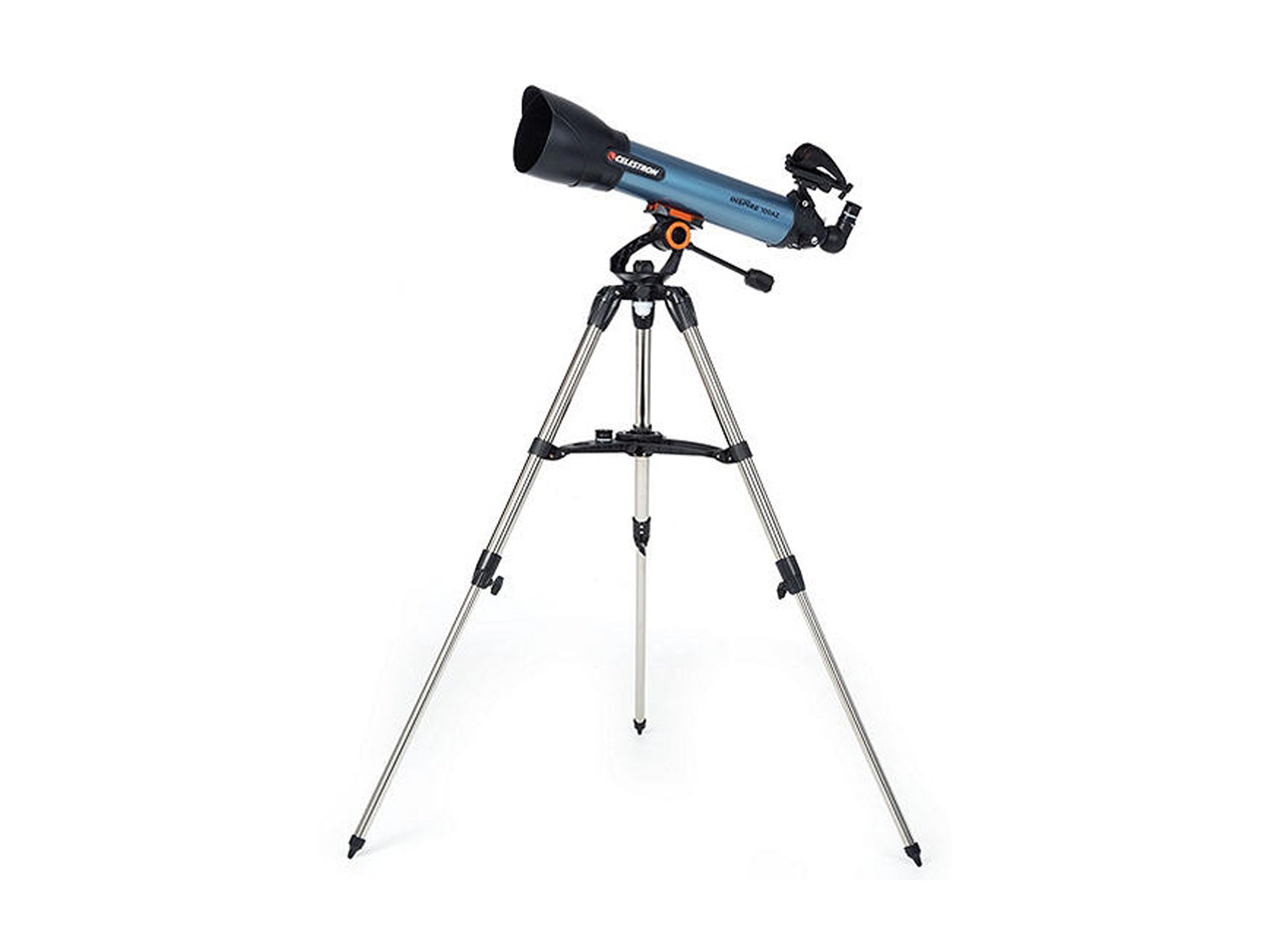
Best: For budding astronomers
Good build quality and an effortless set up meant that it took no time at all before we were being treated to excellent early evening views of Mercury. The larger refractor (100mm+) housed within the 100AZ also means you can really explore and investigate hundreds of deep-sky objects, like galaxies and nebulae. This telescope brings the moon closer, with good crater definition and more details of the lunar surface, especially when using the 20mm eyepiece for some extra magnification. Take the dust cap off and you will see that it doubles as a smartphone holder, allowing you to attach it to the eye piece, which then collects the light captured by the scope and projects it into the phone’s camera.
A single image is then built up from lots of video captures and this really worked well and gave impressive results of solar system objects, even when conditions were far from perfect. Tripod and mount were solid, with a handle that made the 100AZ easy to track around the sky under full control.
Sky-Watcher starquest 130P reflector
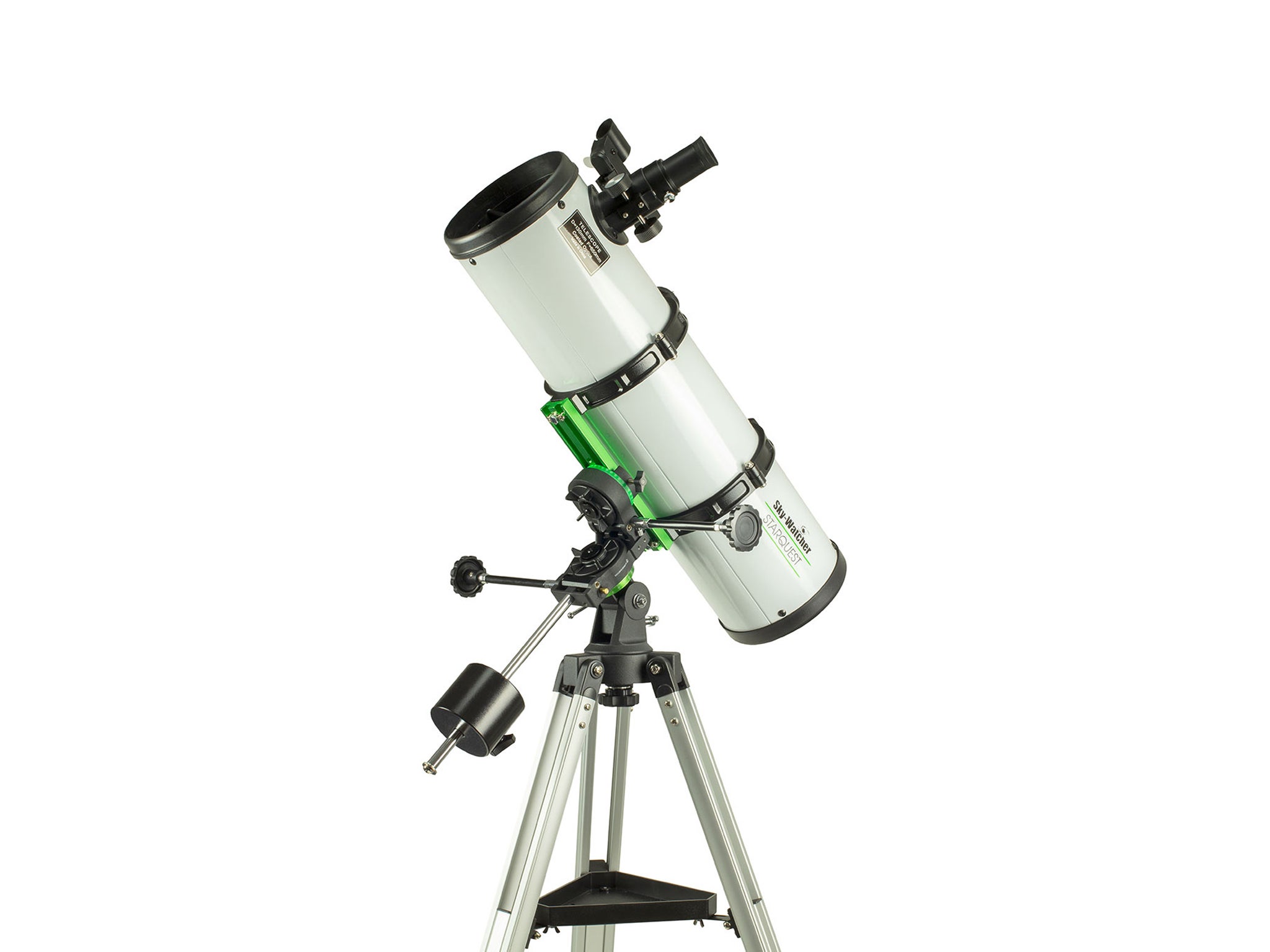
Best: For deep sky gazing
Although it may look a little cumbersome, this reflector was surprisingly lightweight and easy to move around. The equatorial mount that the telescope stands on is well-engineered and even though it looks daunting to set up, the mount wasn’t difficult to construct and allowed for smooth tracking. The scope is supplied with two eyepieces, 25mm and 10mm, which means that you can dial up the magnification when needed, which allowed us sharp, clear views of the lunar surface as well as the ability to study a number of planets and explore some of the brighter galaxies waiting in the deep sky.
Sky-Watcher heritage 100P
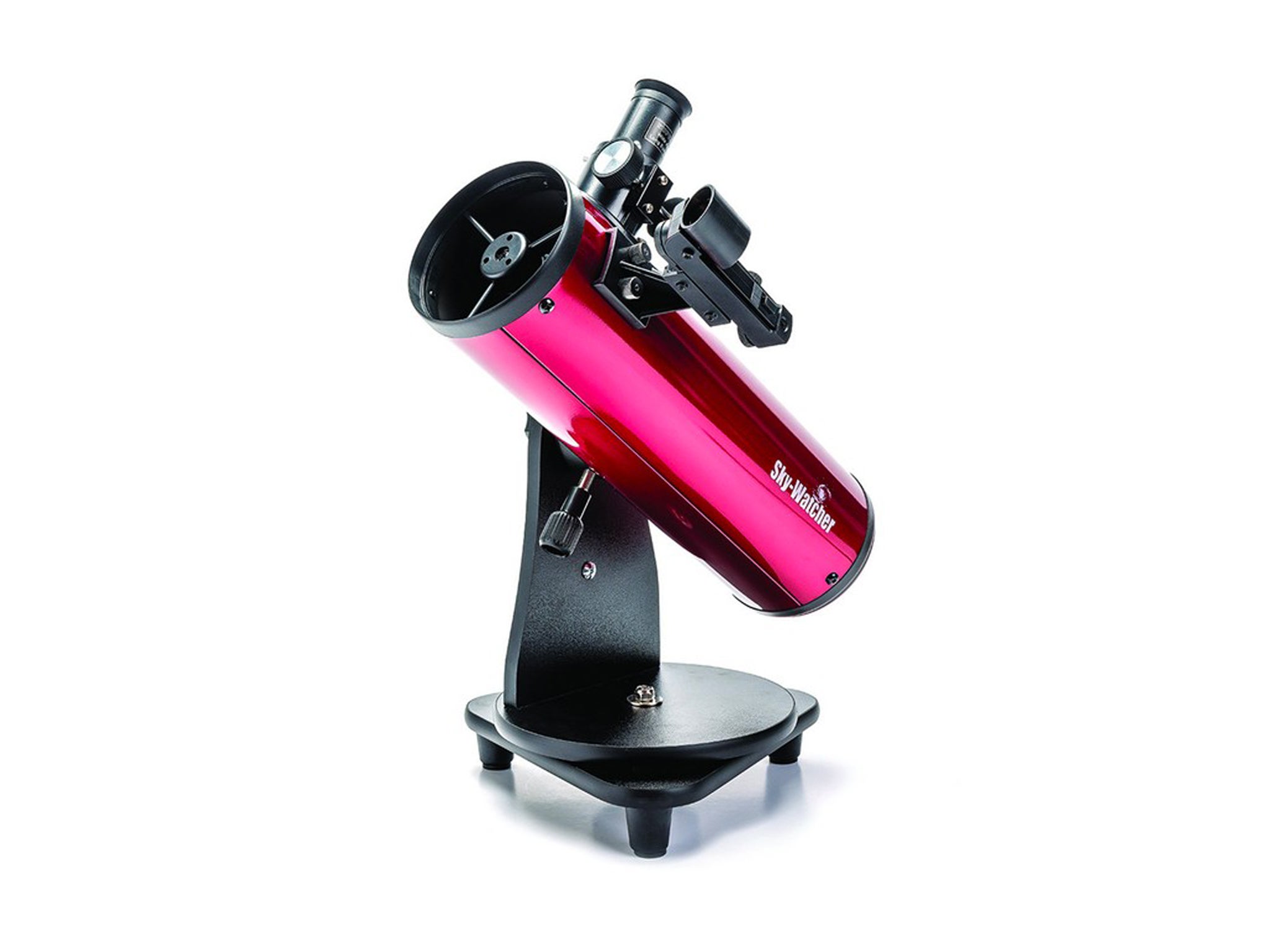
Best: For moon watching
This is a great scope for any one who wants to move on from a basic model, but doesn’t want the hassle of setting up complex mounts. The 100P is known as a Dobsonian because it’s mounted on a revolving base that just sits on the floor, or on a tabletop, and can be angled up or down to find your chosen target.
It’s also compact and very lightweight, which means that it’s a good grab-and-go scope for any one who wants to escape light polluted areas and explore the heavens from dark-sky sites.
The mount moved easily and was effortless to use and the extra magnification from the 25mm and 10mm eyepieces delivered good views of solar system planets and there was some extraordinary detail when we trained it on the lunar surface.
Celestron advanced VX 9.25

Best: All rounder
One of the big advantages of an equatorial mount is that is allows you to enjoy longer sessions of stargazing because you can progressively track stars as they move across the night sky. The NexStar+ handset that moves the mount of the Celestron was easy to understand and a joy to use.
The telescope’s quality optics and excellent magnification meant that we could study a range of deep sky objects as well as a broad range of solar system points of interest. When moving closer to home, we enjoyed some astonishing views of a super moon.
This is a tool for any one who is starting to get serious about their stargazing and the NexStar+ handset meant that we could enjoy any one of the 40,000 objects that are currently dialled into its database.
It’s even possible to go portable, as it’s surprisingly compact and lightweight for such a powerful telescope.
Unistellar eVscope eQuinox
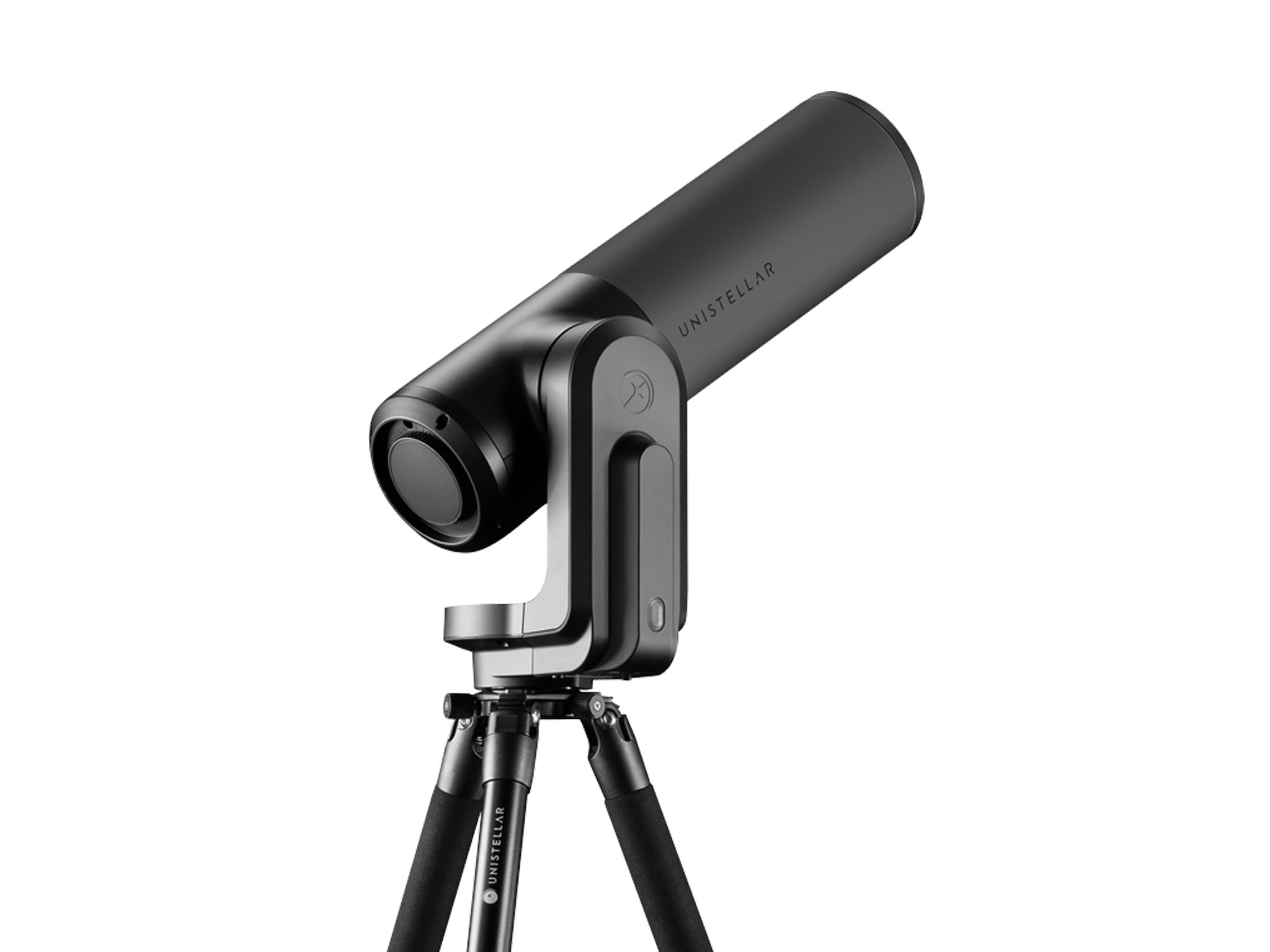
Best: For urban astronomers
This reflector scope packs a lot of tech into a relatively small space to deliver some eye-popping results when you look through the viewfinder. That’s because the eVscope system builds up a live colour image of whatever you’re looking at in the eyepiece.
The eVscope is app-enabled and controlled, so once you connect your wifi and the telescope has done all the hard work for you by comparing the star field to a database of star positions, you’re ready to go exploring via the app.
Planetary detail was good, as was the view of extended deep-sky objects and interstellar nebulae, but we were also treated to astonishing lunar views, which were impressively sharp. Available to pre-order now.
The verdict: Telescopes
Compact, intuitive and connected, the Vanois Stellina is a remarkable piece of astro tech. Not only does it look great when it’s not in use, but it’s also a revelation when it’s doing what it’s designed to do – act as a personal planetarium that can be enjoyed by a gathered group of stargazers.
Voucher codes
For the latest offers on tech and camera equipment, try the links below:
For more tech inspiration, read our camera buying guide to help you choose the best model for you
